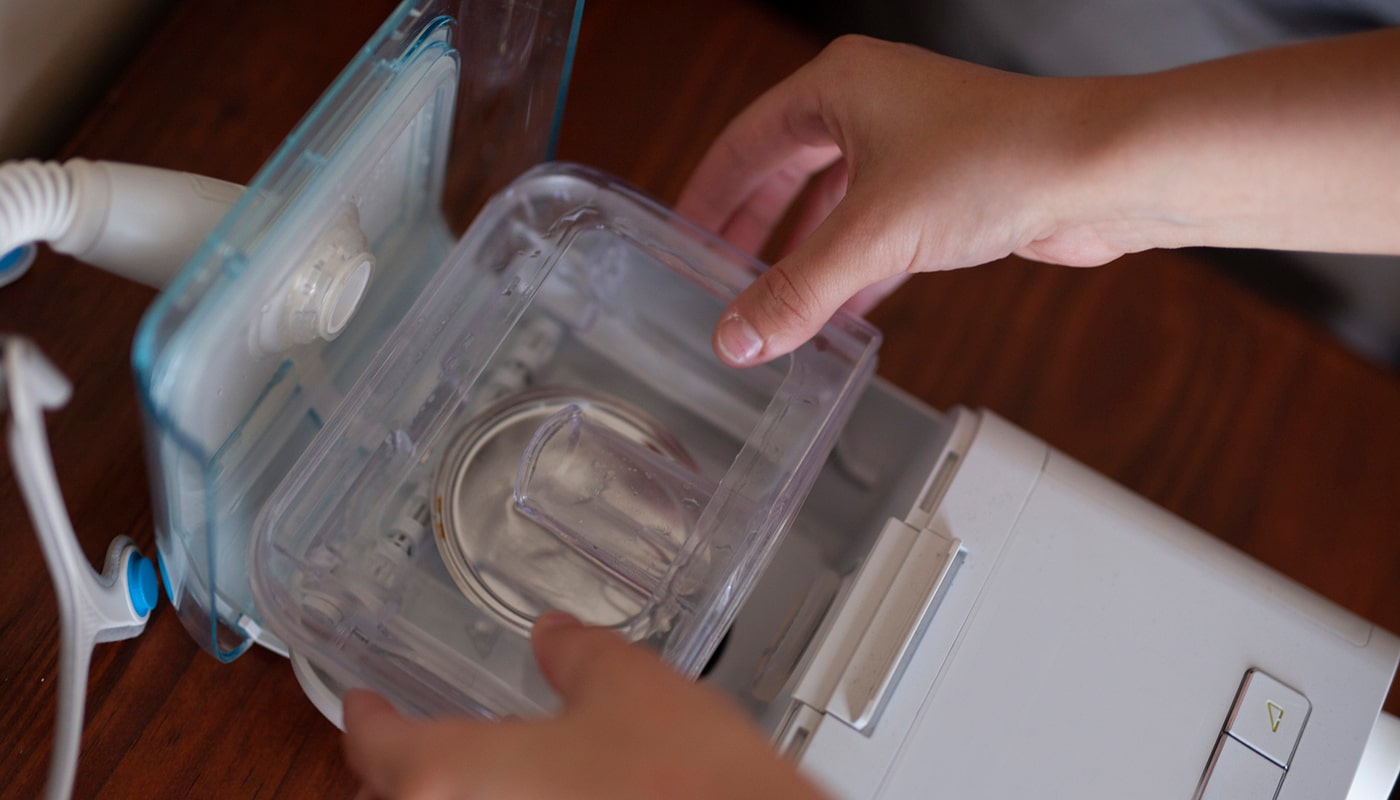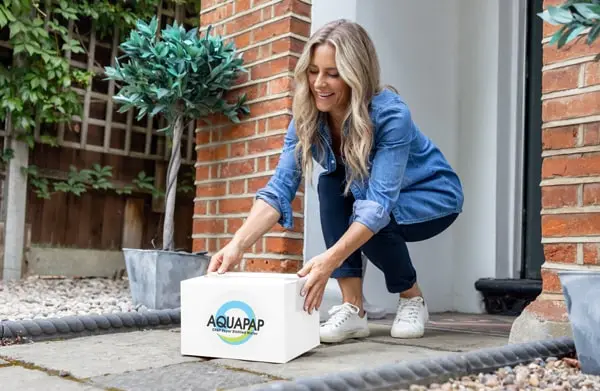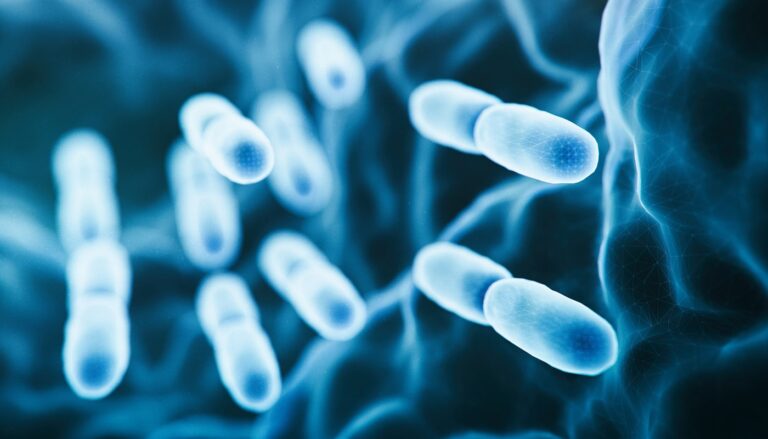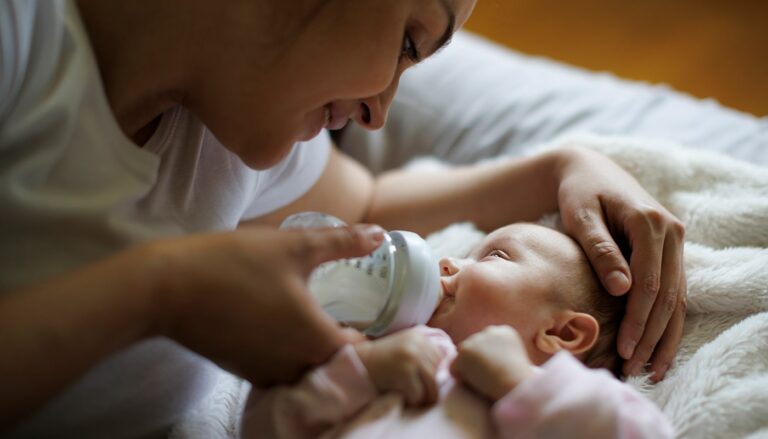CPAP therapy is a lifeline for individuals grappling with sleep apnea, a condition that disrupts breathing during sleep. By delivering continuous positive airway pressure, CPAP machines help maintain open airways, fostering restful and uninterrupted sleep. A key component of this therapy involves the use of water in CPAP machines to provide essential moisture. However, using impure water instead of certified, vapor-distilled CPAP water in your CPAP machine can introduce potential health risks.
This article delves into:
- The significance of CPAP therapy and its components.
- The critical role water plays in ensuring effective CPAP function.
- Potential health risks associated with using impure water in your CPAP device.
Explore the nuances of distilled versus tap water, understand the dangers lurking in impure sources, and discover safe practices to enhance your therapy experience. It’s essential to prioritize your health with informed choices about water usage in your CPAP machine. For optimal results, consider using specially designed CPAP water that ensures safety and efficacy.
Understanding CPAP Machines
Continuous Positive Airway Pressure (CPAP) devices are crucial in managing obstructive sleep apnea, a condition that causes interrupted breathing during sleep. These machines ensure a steady flow of air to keep the airways open, reducing disturbances and promoting restful sleep.
Key Components of CPAP Machines
Motor
The motor is the heart of the CPAP device, generating a continuous stream of pressurized air. This sophisticated component operates through a carefully calibrated system of internal fans and pressure regulators. Modern CPAP motors are designed with advanced brushless technology, ensuring quiet operation while maintaining consistent pressure levels throughout the night.
The motor’s performance is monitored by internal sensors that measure airflow, pressure, and usage patterns. These sensors work in conjunction with the machine’s microprocessor to make real-time adjustments, ensuring optimal therapy delivery. High-end models can even detect and compensate for mask leaks or changes in altitude.
Most contemporary CPAP motors feature smart ramp technology, which gradually increases pressure over time. This feature helps users fall asleep more comfortably by starting at a lower pressure and slowly building to the prescribed therapeutic level. The motor’s durability is also crucial, with quality units designed to operate continuously for thousands of hours without maintenance.
Humidifier
Humidifiers play a crucial role by adding moisture to the air, preventing dryness in your nasal passages and throat. The humidification process involves passing pressurized air over a heated water chamber, where it absorbs moisture before being delivered to your airways. Modern humidifiers use advanced temperature control systems to maintain optimal humidity levels throughout the night.
These units typically offer adjustable humidity settings, allowing users to customize their therapy based on personal comfort and environmental conditions. Some advanced models feature auto-adjusting technology that monitors room temperature and humidity, automatically adjusting output to prevent rainout (condensation in the tubing) while maintaining optimal moisture levels.
The humidifier’s design includes safety features such as automatic shutoff when water levels are low and thermal protection to prevent overheating. Many units now incorporate smart technology that can track water usage and alert users when refills are needed. The water chamber design has also evolved to include anti-microbial materials and easy-clean surfaces to maintain hygiene.
Filters
CPAP Filters are essential for maintaining air quality, serving as the first line of defense against airborne contaminants. Most CPAP machines utilize a two-stage filtration system: a disposable paper filter for larger particles and an ultra-fine filter for microscopic contaminants. These filters can capture particles as small as 0.3 microns, including dust mites, pollen, pet dander, and some bacteria.
The primary filter, typically made from non-woven materials, requires regular replacement every 2-4 weeks to maintain effectiveness. Ultra-fine filters, often using electrostatically charged materials or HEPA-grade technology, can trap particles with up to 99.97% efficiency. This level of filtration is particularly important for users with allergies or respiratory sensitivities.
Modern CPAP filters are designed with airflow optimization in mind, ensuring that filtration doesn’t impede the machine’s pressure delivery. Some advanced models include filter life indicators that monitor usage and alert users when replacement is needed. The filter housing is engineered for easy access and replacement, while maintaining an airtight seal to prevent unfiltered air from entering the system.
Regular filter maintenance is crucial for optimal machine performance and therapy effectiveness. Clogged or deteriorated filters can reduce air pressure, increase motor strain, and potentially allow harmful particles into your airways. Some manufacturers now offer specialized antimicrobial filters for users in high-risk environments or those with compromised immune systems.
Types of CPAP Machines
- Standard CPAP Machine: Delivers a fixed pressure level set by your healthcare provider, ideal for users with consistent pressure needs.
- Auto-CPAP (APAP Machine): Automatically adjusts pressure based on your breathing patterns, providing more flexibility and comfort.
- Bi-level Positive Airway Pressure (BiPAP Machine): Offers two pressure settings—one for inhalation and another for exhalation—beneficial for individuals who require higher pressure support or have difficulty exhaling against constant pressure.
Understanding these components and types helps you appreciate how each aspect impacts the overall effectiveness of CPAP therapy, ensuring optimal performance tailored to individual needs.
The Role of Water in CPAP Therapy
Moisture plays a crucial role in CPAP therapy. The air delivered by CPAP machines can cause dryness and irritation in the nasal passages and throat, which may lead to discomfort and potential non-compliance with therapy. Introducing moisture into the airflow helps mitigate these issues, enhancing user comfort and adherence to treatment.
Functions of the CPAP Humidifier:
- Moisture Control: The primary function of a CPAP humidifier is to add necessary moisture to the air being inhaled. This prevents dryness and eases breathing during sleep.
- Temperature Management: Many humidifiers allow users to adjust the temperature of the water, providing a warmer airflow that is often more comfortable for the user, especially in cooler climates.
- Reduction of Side Effects: By maintaining adequate moisture levels, CPAP humidifiers help reduce common side effects like dry mouth and nosebleeds.
While using vapor distilled CPAP-specific water is typically recommended for use in CPAP humidifiers, it is free from minerals and impurities found in tap water. This reduces the risk of scaling and ensures that the equipment functions effectively over time. Using distilled water not only maximizes the lifespan of your humidifier but also ensures that you receive clean, hygienic air during therapy.
Using Distilled Water vs. Tap Water: Which is Safer for Your Health?
Choosing the right type of water for your CPAP machine is crucial for both its performance and your health. Distilled water is often recommended due to its high level of purity and absence of minerals and impurities. The distillation process removes contaminants, making it the safest option to prevent potential issues such as scaling or microbial growth within the device.
Tap water, on the other hand, may contain a variety of mineral deposits and pathogens which can create problems when used in CPAP machines. These include:
- Contaminants: Tap water can have various dissolved minerals like calcium and magnesium, leading to buildup in the humidifier chamber. This scaling can affect the efficiency of your CPAP machine and complicate maintenance.
- Pathogens: Harmful microorganisms such as Pseudomonas aeruginosa or Legionella spp. may be present in tap water. Using impure water in CPAP could potentially aerosolize these pathogens, increasing the risk of respiratory infections.
Understanding these differences underscores the importance of using distilled water for CPAP therapy. Its safety and purity make it an ideal choice to maintain both machine longevity and user health, preventing complications associated with impure water in CPAP systems.
Health Risks Associated with Using Impure Water in Your CPAP Machine: What You Need to Know!
Using unclean water in your CPAP machine can introduce harmful germs that pose significant health risks. Pseudomonas aeruginosa, Legionella spp., and Acanthamoeba spp. are common offenders found in tap water that can lead to respiratory infections when inhaled.
Here are the specific health risks associated with each of these pathogens:
- Pseudomonas aeruginosa: This bacterium thrives in moist environments and can cause severe lung infections, especially in individuals with weakened immune systems.
- Legionella spp.: Known for causing Legionnaires’ disease, these bacteria can multiply in stagnant water and become dangerous if released into the air through the humidifier of a CPAP machine.
- Acanthamoeba spp.: These microscopic amoebae are not only found in water but also capable of causing serious respiratory and neurological diseases upon inhalation.
When you use a CPAP machine, the air pressure can turn these germs present in dirty water into tiny droplets or aerosols. As you breathe in, these aerosols can enter your lungs, increasing the risk of infections.
To prevent these health hazards, it is essential to keep the water used in your CPAP machine clean by using distilled or similarly purified water.
Real-Life Cases: How Impure Water in CPAP Machines Can Lead to Serious Health Consequences!
Using impure water in CPAP machines has been linked to significant health issues, particularly respiratory infections. There have been reported cases where individuals developed pneumonia and other serious respiratory conditions after using tap water in their CPAP devices. These infections occur when pathogens present in the impure water become aerosolized during the humidification process.
Health risks are notably higher for vulnerable groups such as older adults and infants:
- Older Adults: With a naturally weakened immune system, older adults face an increased risk of developing complications from respiratory infections. The introduction of bacteria or fungi through contaminated water can lead to severe health setbacks, including chronic respiratory problems.
- Infants: Infants possess underdeveloped immune systems, which makes them particularly susceptible to infections. Using non-distilled water in a CPAP machine for infants can introduce harmful pathogens that their bodies are ill-equipped to fight off.
These real-life scenarios underscore the critical importance of using distilled water in CPAP machines to prevent potential health hazards. Ensuring the purity of the water used can significantly reduce the risk of infection and promote safer therapy for all users, especially those within vulnerable populations.
Debunking Myths: Are You Putting Yourself at Risk by Believing Tap Water is Safe for Your CPAP Machine?
A common misconception among CPAP users revolves around the safety of using tap water in their devices. Many believe that tap water, being generally safe for drinking, should pose no threat when used in a CPAP humidifier. However, survey data reveals a significant gap in user awareness regarding the potential risks associated with impure water in CPAP machines.
The Centers for Disease Control and Prevention (CDC) provides clear recommendations on this issue. The CDC advises against using tap water in CPAP machines due to the presence of various contaminants and pathogens that can be harmful when inhaled. In fact, recent studies have highlighted the dangers of using unsterile tap water in medical devices, including the risk of serious infections. Distilled CPAP water is the preferred choice, as it effectively minimizes these risks by eliminating impurities and preventing bacterial growth within the humidifier reservoir.
Understanding the distinction between consumable and medical device safety standards is crucial for ensuring optimal health outcomes. While tap water may be safe for drinking, its use in medical devices like CPAP machines can lead to severe health issues due to contamination. By adhering to guidelines set forth by health authorities like the CDC, you can protect yourself from potential respiratory issues linked to impure water usage in your CPAP machine.
For further information on proper CPAP maintenance practices, it’s essential to understand why distilled water is recommended over tap water. Distilled water is purified through a process that removes impurities and contaminants, making it a much safer option for your CPAP machine.
Keeping Your CPAP Equipment Clean: Essential Maintenance Tips to Prevent Bacteria Buildup
Maintaining cleanliness in your CPAP equipment is crucial to preventing the growth of pathogens in humidifiers and reservoirs. Regular cleaning methods are vital to ensuring the air you breathe remains pure and free from contaminants.
Key Cleaning Methods for CPAP Devices
Daily Cleaning
- Mask and Tubing: Wash with warm, soapy water as outlined in this guide on cleaning your CPAP mask and hose. Rinse thoroughly to remove soap residue.
- Humidifier Chamber: Empty any remaining water, wash with mild detergent, and rinse well.
Weekly Deep Cleaning
- Filters: Check for dust buildup; replace disposable filters as recommended by the manufacturer.
- Machine Exterior: Wipe down with a damp cloth to remove dust and debris.
- Humidifier Chamber: Use a vinegar solution (1 part vinegar to 3 parts water) to disinfect; soak for 30 minutes, then rinse thoroughly.
Monthly Maintenance
Conduct a full inspection of all components, checking for wear or damage that might affect performance.
Regular cleaning not only prevents bacteria buildup but also extends the lifespan of your machine. Using products like Aquapap vapor-distilled water can further enhance safety by reducing mineral deposits and maintaining device efficiency. Prioritize these practices to ensure optimal functioning of your CPAP equipment.
To further assist in maintaining your CPAP equipment, consider exploring these best ways to clean your CPAP and prevent skin irritation with effective CPAP cleaning tips.
Convenience and Safety Combined: Why Aquapap Vapor-Distilled Water is the Best Choice for Your CPAP Machine!
Choosing Aquapap vapor-distilled CPAP water for your CPAP machine offers multiple benefits that emphasize both convenience and safety. This specialized water is designed to meet the highest standards of purity, making it an ideal choice for maintaining your CPAP equipment.
Key Advantages:
Unmatched Purity and Safety Standards
Aquapap vapor-distilled water undergoes a rigorous distillation process that removes impurities, minerals, and potential pathogens. This multi-stage purification system ensures that every drop of water meets the highest standards of purity, making it exceptionally safe for CPAP therapy. The process includes advanced filtration methods that eliminate even microscopic contaminants that could potentially harm your respiratory system.
Beyond basic purification, Aquapap’s manufacturing process incorporates additional quality control measures to maintain consistent purity levels. Each batch undergoes thorough testing to ensure it meets strict quality standards, providing users with reliable protection against waterborne contaminants that could compromise their health.
Innovative Convenient Packaging Solutions
Available in travel-friendly sizes (8 oz, 12 oz, 16.9 oz), Aquapap water is thoughtfully designed for both home use and travel convenience. The ergonomic bottle design features easy-pour spouts that prevent spills and waste, while the compact sizes fit perfectly in carry-on luggage or bedside tables. This attention to packaging detail makes daily CPAP maintenance effortless and stress-free.
The variety of size options allows users to choose the perfect quantity for their specific needs, whether it’s a week-long business trip or daily home use. The clear measurement markings on each bottle ensure precise filling of your CPAP humidifier chamber, eliminating guesswork and potential overfilling issues.
Professional Medical Endorsement
Hospitals and clinics across the country trust Aquapap for its consistent quality and reliability. This widespread adoption in medical settings speaks volumes about the product’s safety and effectiveness. Healthcare professionals regularly recommend Aquapap to their patients, recognizing its superior quality compared to other water sources.
The medical community’s endorsement is backed by extensive research and clinical studies that validate the importance of using properly distilled water in CPAP therapy. This professional backing provides users with confidence in their choice of Aquapap for their CPAP needs.
Environmental Responsibility and Sustainability
Aquapap demonstrates strong commitment to environmental stewardship through its eco-friendly packaging initiatives. The bottles are made from recyclable materials, and the company actively promotes recycling programs to minimize environmental impact. Their subscription service not only ensures consistent supply but also helps reduce carbon footprint through optimized delivery routes and scheduling.
- The company continually invests in sustainable manufacturing practices, including energy-efficient distillation processes and waste reduction measures. This dedication to environmental responsibility allows users to maintain their CPAP therapy while supporting ecological conservation efforts.
Opting for Aquapap not only aids in maintaining the longevity of your CPAP machine but also contributes to a healthier sleep environment.
Prioritize Your Health with Safe Practices as a CPAP User!
Embracing safe practices for CPAP users is essential to safeguard your health and ensure optimal therapy outcomes. By using distilled water, such as Aquapap vapor-distilled water, you minimize the risk of introducing contaminants and pathogens into your CPAP machine. This simple choice helps prevent respiratory infections and extends the lifespan of your device.
Remember these key practices:
- Always use distilled CPAP water instead of tap or impure water in CPAP humidifiers.
- Regularly clean and maintain your equipment to prevent bacteria buildup.
- Stay informed about best practices and recommendations from healthcare professionals.
Make informed decisions that prioritize your health. Adopting these preventive measures not only enhances comfort and sleep quality but also supports overall wellness. Make the commitment today to improve your CPAP experience through mindful and safe usage.






